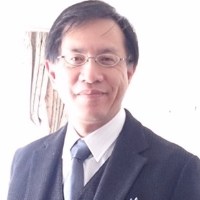Pathology Congress 2025

Nara Medical University, Japan
Abstract:
Sleep apnea syndrome (SAS) exposes cells throughout the body to intermittent hypoxia (IH). Serum inflammation markers such as tumor necrosis factor (TNF)-α, interleukin (IL)-1β, IL-6, IL-8, IL-10, and C-X-C motif chemokine ligand 10 (CXCL10) in SAS patients have been reported to be elevated. However, the details of why IH leads to induce these elevations remain unclear. In this study, we investigated inflammation-related transcripts in human monocytes (human HL-60 and THP-1 cells) exposed to IH by real-time RT-PCR and found that IL-1β, IL-6, and IL-8 mRNAs were significantly increased. ELISA confirmed that IL-1β, IL-6, and IL-8 in the culture media were significantly increased by IH. However, the promoter activities of IL-1β, IL-6, and IL-8 were not upregulated. However, IH treatment significantly decreased microRNA (miR)-146a in the IH-treated cells. The introduction of the miR-146a mimic but not the miR-146a mimic NC (control) abolished the IH-induced upregulation of IL-1β, IL-6, and IL-8. These results indicated that IL-1β, IL-6, and IL-8 were upregulated by IH through the IH-induced downregulation of miR-146a in monocytes and suggested that SAS patients developed so-called “systemic inflammation” through the IH-induced upregulation of IL-1β, IL-6, and IL-8.
Biography:
Shin Takasawa has completed his MD at the age of 25 years from Yamagata University, and PhD at the age of 30 years from Tohoku University. He is the professor of Nara Medical University. He has published more than 200 papers in reputed journals and has been serving as an editorial board member of Life Sci. and Int. J. Mol. Sci
